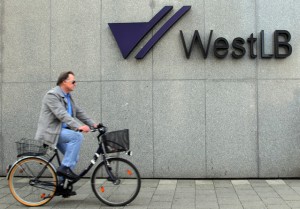 This post is by Yann Louvel, BankTrack Climate and Energy Campaign Coordinator.
This post is by Yann Louvel, BankTrack Climate and Energy Campaign Coordinator.
Last month we got some promising news from WestLB, the German bank. They produced a new policy on Arctic drilling (which our friends at Platform have written about here) and they published an update of their coal policy.
While the first edition of their policy on “Coal-Fired Power Generation” already included interesting requirements for prospective clients, such as the need for operators “to provide the physical space necessary to carry out carbon capture (CCS)”, this new edition has even more on offer. For instance, this is the first time that I have seen a bank stipulate as a requirement to power-plant operators the need “to ensure that there is no feasible less GHG-intensive alternative/fuel/energy source”.
Another ‘first of its kind’ criteria is the need for WestLB clients to have “Green House Gas reduction targets (to) be in place, monitored and audited in accordance with the 2 degrees Celsius taget of the EU and UNFCCC”. These requirements, while self evident to us, are definitely not common practice in the banking sector today. They create the right incentives and send the right warning signals to bankers and clients alike that future requests for financing coal projects/companies will be intensely scrutinized, and will require more paper work, time and money to proceed.
Overall, with this coal policy WestLB takes a brave step in the right direction, and sets an example for other banks to follow swiftly. The only problem is that this mental shift in bankers’ brains needs to happen EXTREMELY quickly. The International Energy Agency stated in its latest World Energy Outlook that to have a chance of achieving the 2°C scenario, “all infrastructure built after 2017 needs to be zero carbon”. With CCS still being out of reach by then and with several years needed to build a new coal power plant, this basically means that investments in new coal power plants need to stop NOW if we want to be serious about combating climate change. That’s the difficult reality banks need to be confronted with and must act upon.